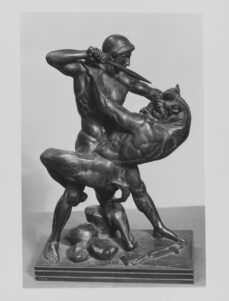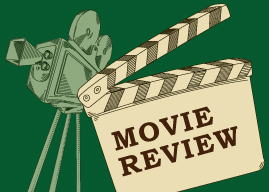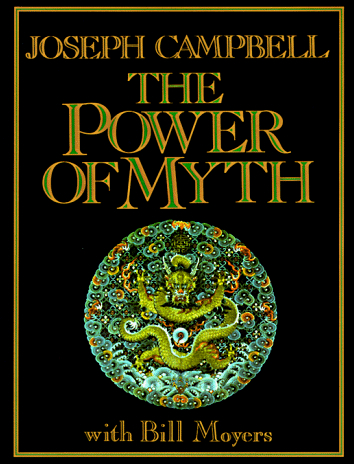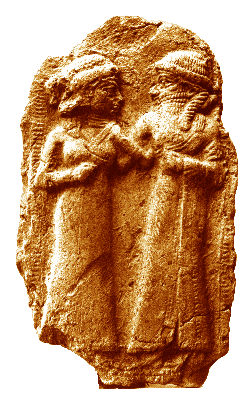Theseus and the Minotaur: The Defining Human Image
Article By Siobhan Farrar
 The image of Theseus, hero of Attica, standing at the centre of the labyrinth, holding a magical thread (called a clue) brandishing his sword, about to face destiny in a moment of reckoning with the Minotaur, is perhaps one of the most defining scenes from mythology with a symbolism both rich and complex.
The image of Theseus, hero of Attica, standing at the centre of the labyrinth, holding a magical thread (called a clue) brandishing his sword, about to face destiny in a moment of reckoning with the Minotaur, is perhaps one of the most defining scenes from mythology with a symbolism both rich and complex.
What this scene reveals is worthy of meditation and there are several useful keys of interpretation available to us. To begin, let us recall that according to Joseph Campbell, the mythological realm pertains to the inner, to the psyche and to the causal.
“The first work of the hero is to retreat from the world scene of secondary effects to those causal zones of the psyche where the difficulties really reside…” (Campbell, cited in McInnis, 1975 p.12)
What is being explained is that the characters and elements represented belong to our inner world and are aspects of us. This defining scene is the crescendo and climax of a story which can be understood as the ‘last degree’ of relation between our spiritual and material natures (McInnis, 1975).
The labyrinth, stage for this decisive moment, can be explained as a complex structure from which it is nearly impossible to escape. Historically, several were reported to exist in the ancient world and it is recorded that some initiatory temples were actually built in a labyrinthine form. Symbolically, however, it represents the whirlpool of everyday life, what in the East may be termed ‘Maya’, the great web of illusion and sensation which ensnares and encases the human spirit. In a Neoplatonic key, the labyrinth is the place that the soul ‘falls’ into (Cirlot, 1971).
Theseus, our hero in the scene, embarks on a quest to discover the centre, the centre of life in the middle of the labyrinth where he encounters the Minotaur, a monster. J.E. Cirlot, in his excellent dictionary of symbols, suggests that the inversion of an animal head over a human body denotes the extreme, yet logical conclusion of human life if baser forces dominate. Conversely the hero can be understood as the logical conclusion of human life if the spiritual forces dominate (Cirlot, 1971).
Cirlot also explains that the ‘tribute’ of seven Athenian men and seven Athenian women paid to the Minotaur to satiate the monster’s appetite symbolises the ‘payment’ or loss of our higher values and virtues. It is the hero who seeks to end this tragedy and to do so the conquest of the Minotaur must be complete, there is no room for negotiation. At the centre of life, then, and of ourselves, we find a symbol of a ‘pair of opposites’ and a tension certain to resolve in conflict. It is the severity of the encounter which demands the emergence of a heroic impulse and it is the severity of the encounter which creates an opportunity to propel the heroic, spiritual consciousness of man through that ‘last degree’…
“The Minotaur in the labyrinth forms the point at which the hero blends his essence with chaos so that he may amalgamate the inexhaustible energies of the cosmos” (McInnis, 1975).
Now let us try to shed more light on the scene by considering other elements present. The (clue) magical thread of Ariadne can be understood as memory, which is the gift of the soul. When we recognise ourselves in the Labyrinth, facing a battle with adversity, it may be helpful to remember that we are always in fact holding onto a clue which is the recollection of our soul (Cirlot, 1971).
At the decisive moment the hero is also brandishing a sword which, according to certain versions of the story, after slaying the Minotaur actually transforms into a torch, a beacon of light. We might be reminded of the perennial idea, that light is born in the darkness and perhaps, rather than banishing the Minotaur we are being asked to seek it out, to discover the essence of life at the centre, who we truly are, in order to bring light into the world.
However, caution is needed because when Theseus first enters the Labyrinth he does so as part of the Athenian ‘tribute’, as food for the monster and symbolically as a ‘best intention’ or ‘virtue’ destined to be devoured. Seeking the Minotaur is not feeding the monster but moving towards it, looking it directly in the eye, knowing it, being tested and being victorious.
This encounter at the centre, the replication of this defining scene, happens at some level whenever our consciousness becomes aware of the play of forces within us. The goal we must remember is an ascent up the spiritual ladder, which must be fought for. Using the difficulties of life to liberate the heroic impulse and the necessary Will to face down our animal nature and propel ourselves towards the world above the labyrinth and its spiritual light.
Image Credits: By https://www.metmuseum.org/art/collection/search/192857 | Wikimedia Commons | CC0 1.0
The entity posting this article assumes the responsibility that images used in this article have the requisite permissionsImage References
By www.metmuseum.org/art/collection/search/192857 | Wikimedia Commons | CC0 1.0
Permissions required for the publishing of this article have been obtained
Article References
1.Cirlot. J.E. 1971. A Dictionary of Symbols. Second Edition. New York. Philosophical Library. 2.McInnis. J. L. 1975. H.P. Lovecraft: The Maze and the Minotaur (volume I). Michigan. Xerox University Microfilms. 3.Addey. T. 2000. The Seven Myths of the Soul. Guildford. The Prometheus Trust.




What do you think?